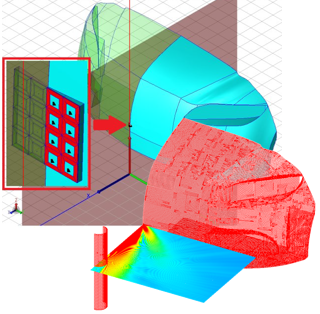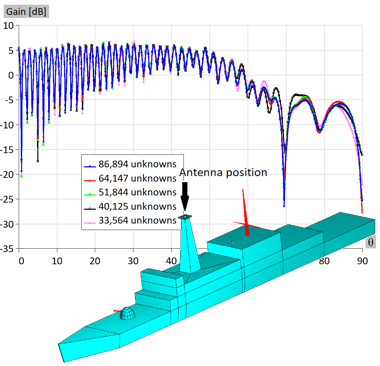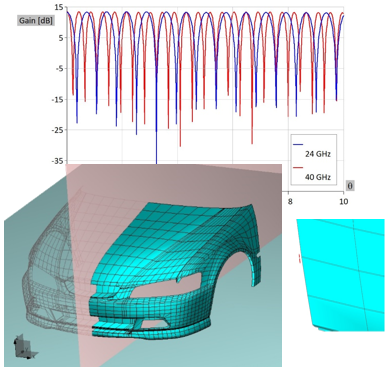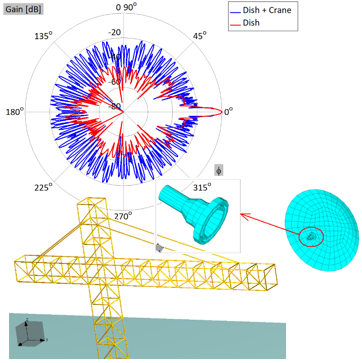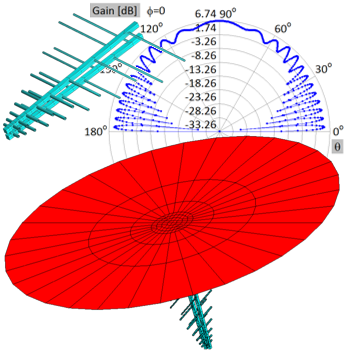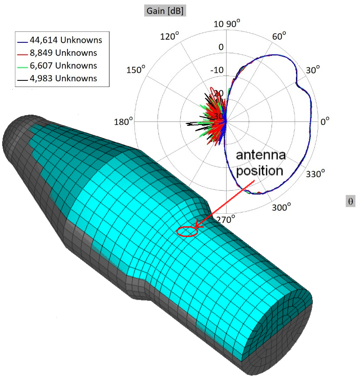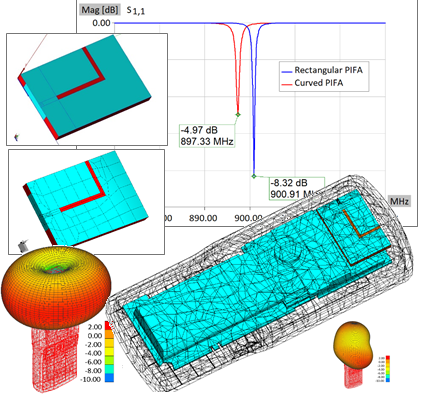Obstacle Detection with 77 GHz Automotive Radar
One of typical applications of EM tools in automotive radar industry would be accurate prediction of radiation pattern of automotive radar antenna mounted on the front part of a car. Also, near field distribution in front of the car shell (usually in presence of obstacles) is extremely important.
This application note shows DDS capabilities since the frequency in question is 77 GHz. The anti-collision radar is modeled by 4×4 patch array which is mounted on the front part of the car shell.
The EM simulations were performed powerful desktop with 2 12-core CPUs and significant amount of RAM. After the convergence study, it was concluded that the first DDS iteration enables excellent accuracy. The simulation results provide deep insight via radiation pattern or the near field of the obstacle influence to the antenna mounted to car bumper. All simulation are carried in under 1h.


